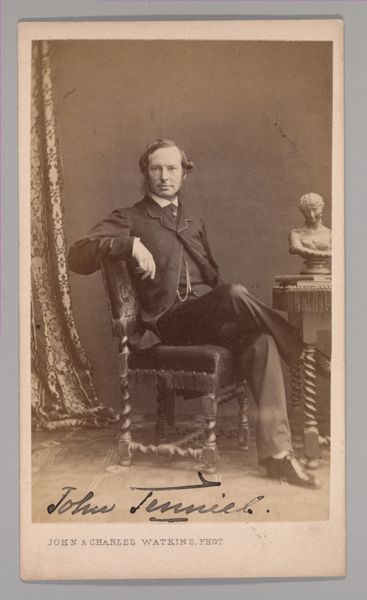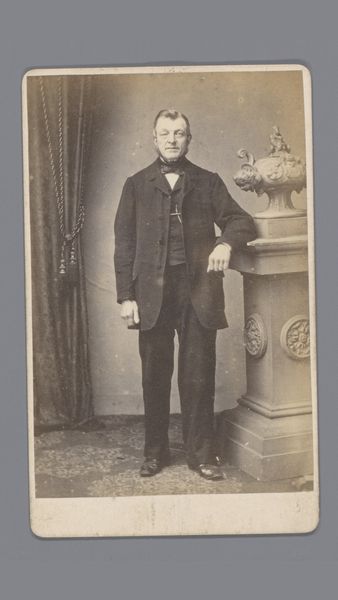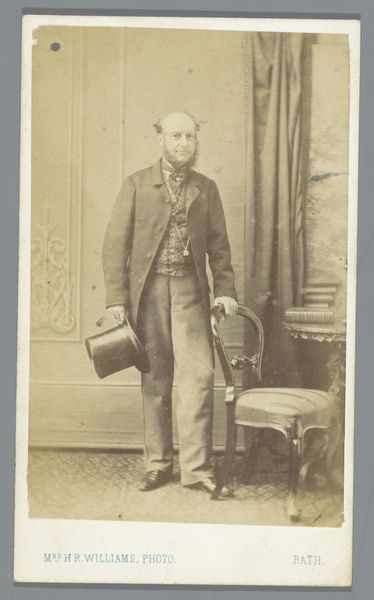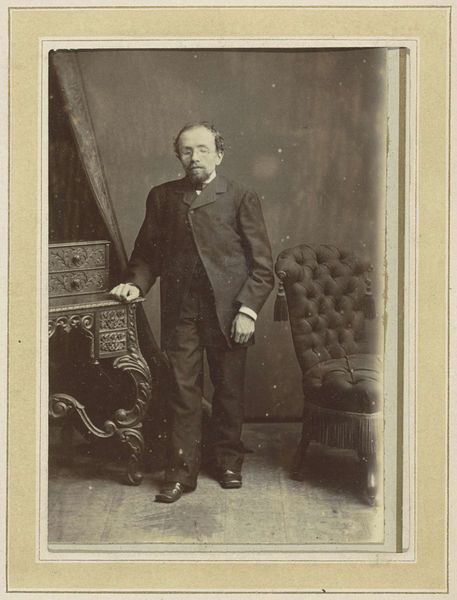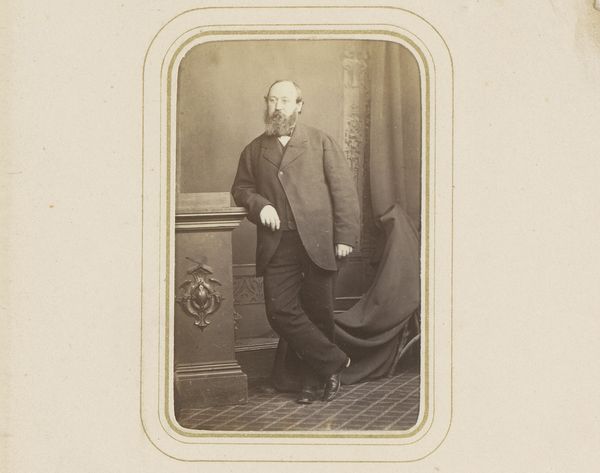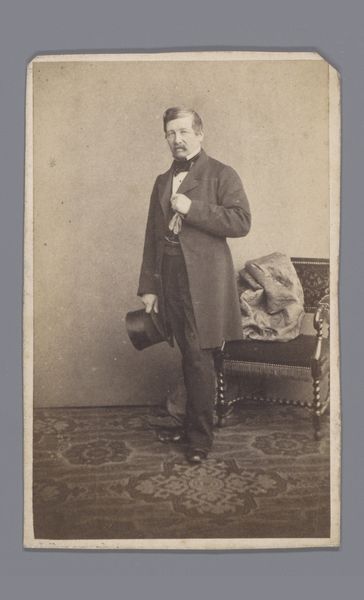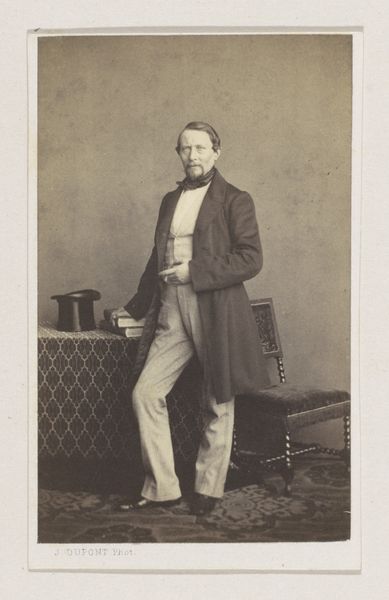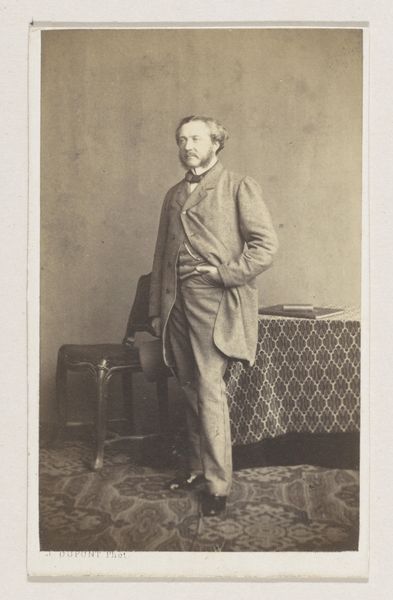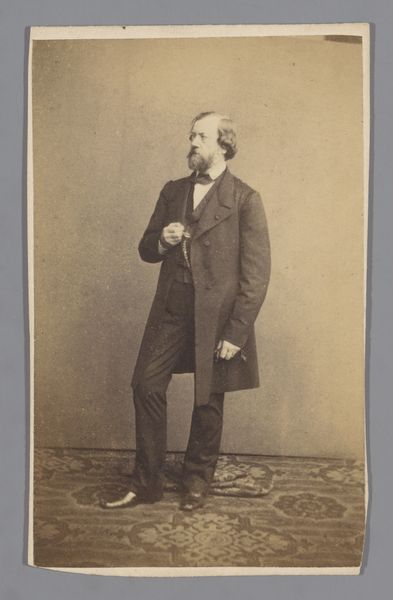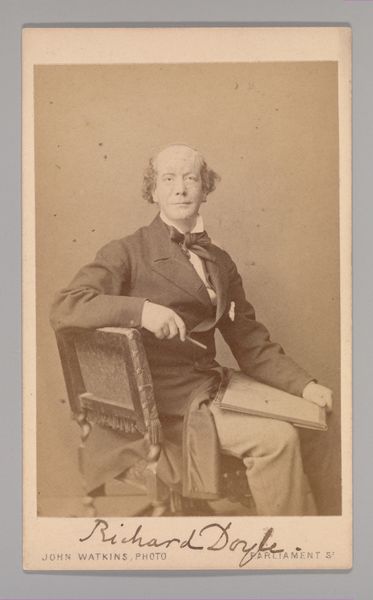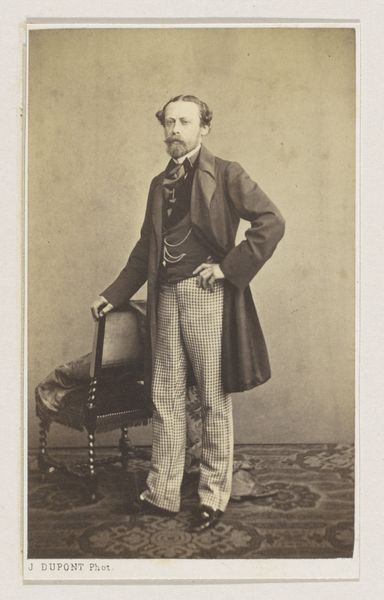
Portret van een onbekende jongen gekleed in een pak voor de eerste heilige communie c. 1870 - 1910
0:00
0:00
photography, albumen-print
#
portrait
#
photography
#
historical fashion
#
academic-art
#
albumen-print
Dimensions: height 105 mm, width 64 mm
Copyright: Rijks Museum: Open Domain
Editor: Here we have a photo, around 1870 to 1910, by Prosper Morren, titled "Portrait of an Unknown Boy Dressed for His First Holy Communion," done using albumen print photography. I am struck by the detail in the clothes – you can almost feel the wool of his suit. What’s most interesting to you about this piece? Curator: The albumen print is itself the key to unlocking much of the social context. The process involved coating paper with egg white, making it light-sensitive. This photograph is an object born from chemistry, from specific industrial and agricultural practices. These albumen prints allowed for mass reproduction, indicative of shifting societal values valuing a new level of widespread distribution of images.. Editor: So, you’re focusing on the industrial processes as crucial to its creation? Curator: Absolutely. This wasn't some unique, handcrafted item for the elite. Photography studios arose that catered to a broader audience. And look at his clothes – the labor that went into producing this child’s formal suit represents a significant investment for the family, illustrating both aspiration and the values of the era. Editor: That makes sense. Thinking about photography as something that could be bought and sold on a wide scale—changing perceptions of image and value in late 19th-century society. Curator: Precisely! We have to consider the availability of materials, the darkroom labor and economic conditions in understanding how art, even photography, functions as both reflection and a shaper of our world. How has our perception shifted now, having dissected the role of the physical making of this piece? Editor: It's fascinating to see the industrial behind even a posed portrait like this. I appreciate now understanding this as more than just capturing a likeness, but an item produced via a material industrial complex. Thanks!
Comments
No comments
Be the first to comment and join the conversation on the ultimate creative platform.
